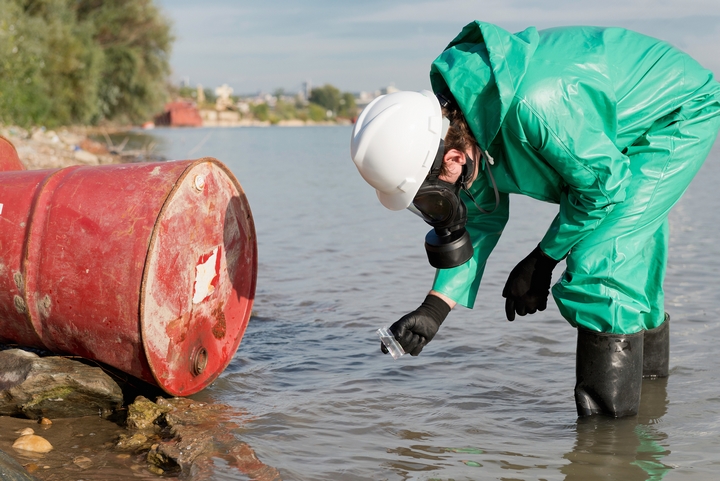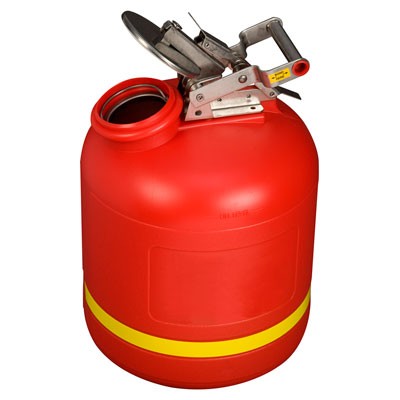Exactly How Liquid Waste Disposal Works: A Comprehensive Overview of Strategies and Technologies Utilized

Summary of Fluid Waste Kind
The complexity of fluid waste types requires an extensive understanding of their features and ramifications for disposal. Fluid waste can generally be categorized right into several types, consisting of industrial, metropolitan, agricultural, and harmful waste. Each group shows unique properties, calling for certain management approaches to mitigate environmental and health and wellness risks.
Industrial liquid waste stems from producing processes and frequently includes a variety of impurities, such as heavy metals, solvents, and organic substances. Community fluid waste, largely consisting of wastewater from houses and commercial facilities, has raw material, nutrients, and pathogens (industrial wastewater treatment). Agricultural fluid waste, including overflow from farms, might have plant foods, pesticides, and pet waste, posing dangers to water high quality and ecological communities
Harmful liquid waste is identified by its toxicity, sensitivity, or potential to trigger injury. This classification includes substances like acids, bases, and specific chemicals that require rigorous handling and disposal methods. Recognizing these diverse liquid waste kinds is important for developing effective disposal methods and guaranteeing compliance with ecological regulations. Proper classification and characterization are necessary for executing appropriate therapy techniques and minimizing the damaging influences on public health and the setting.
Physical Therapy Approaches

Testing is the preliminary action, where bigger fragments and debris are eliminated from the fluid waste using displays or grates. In sedimentation containers, larger fragments resolve at the base, forming a sludge layer, while the made clear liquid can be additional treated.
Purification is an additional necessary technique that entails passing the fluid via porous materials, such as sand or membranes, to record smaller fragments. This action improves the quality of the fluid, making it suitable for subsequent treatment procedures.

Chemical Therapy Techniques
Chemical treatment strategies are vital for efficiently taking care of liquid waste, specifically in addressing liquified and colloidal pollutants that physical methods may not properly get rid of. These techniques use numerous chemical representatives to neutralize, speed up, or transform unsafe substances into much less unsafe types.
One common approach is coagulation and flocculation, where chemicals such as alum or ferric chloride are contributed to promote the gathering of suspended fragments. This process improves sedimentation, permitting simpler elimination of the resulting sludge. Additionally, oxidation processes, employing agents like chlorine or ozone, are employed to break down complicated natural compounds and pathogens, providing the waste much safer for discharge or additional treatment.
Neutralization is an additional important strategy, which adjusts the pH of acidic or alkaline waste streams to neutral degrees, protecting against potential injury to downstream systems and the atmosphere. Moreover, advanced oxidation procedures (AOPs) utilize combinations of oxidants and ultraviolet light to weaken relentless pollutants, accomplishing a higher degree of therapy efficiency.
Biological Treatment Procedures
Biological treatment procedures play a vital function in the administration of fluid waste by utilizing microbes to disintegrate natural issue and lower pollutant levels. These processes can be broadly classified into anaerobic and aerobic therapies, each visit their website employing particular microbial communities to accomplish reliable waste degradation.
Aerobic treatment entails the use of oxygen you could try these out to assist in the failure of natural products by bacteria. This process is commonly applied in turned on sludge systems, where oygenation containers give a favorable setting for microbial development, bring about the oxidation of organic pollutants. The resultant biomass can be divided from treated effluent via sedimentation.
In contrast, anaerobic therapy occurs in the lack of oxygen, relying on various microorganisms to damage down natural matter. This approach is specifically advantageous for high-strength waste, as it creates biogas, a renewable resource resource, while reducing sludge manufacturing. Technologies such as anaerobic digesters are regularly used in industrial and community applications.
Both aerobic and anaerobic biological therapies not only reduce the ecological effect of liquid waste however also promote resource recuperation, making them essential parts of lasting waste management strategies. Their flexibility, effectiveness, and efficiency support their prevalent implementation across different fields.
Emerging Technologies in Disposal
Ingenious strategies to fluid garbage disposal are quickly developing, driven by innovations in technology and a raising focus on sustainability. Among these emerging technologies, membrane bioreactors (MBRs) have acquired grip for their capability to combine biological therapy with membrane filtration, resulting in premium effluent that can be reused in numerous applications. MBRs make it possible for smaller footprints and more efficient procedures compared to typical systems.
An additional encouraging growth is the usage of anaerobic food digestion incorporated with nutrient recuperation modern technologies, which not just deals with fluid waste however likewise produces biogas and recuperates important nutrients like nitrogen and phosphorus. This double benefit enhances resource performance and lowers ecological influence.
Furthermore, progressed oxidation processes (AOPs) are being embraced for the degradation of complex organic toxins. These approaches make use of effective oxidants and drivers to break down impurities at the molecular degree, using an extremely effective solution for tough waste streams.
In addition, the combination of man-made intelligence and artificial intelligence in waste more tips here monitoring systems is enhancing operational performance and anticipating maintenance, resulting in minimized prices and enhanced environmental conformity. These innovations reflect a substantial shift in the direction of more sustainable and efficient liquid garbage disposal practices.
Verdict
In final thought, effective fluid waste disposal demands an extensive understanding of numerous methods and modern technologies. The combination of physical, chemical, and organic treatment approaches guarantees the reliable administration of varied waste types. In addition, the development of cutting-edge technologies improves therapy effectiveness and advertises sustainability in waste management methods. By continuously advancing these techniques, it ends up being feasible to attend to the expanding difficulties linked with liquid waste, eventually adding to environmental management and resource healing.
Fluid waste disposal is an important aspect of environmental administration, calling for a comprehensive understanding of different strategies and modern technologies tailored to different waste types. Liquid waste can broadly be categorized into several types, including industrial, community, agricultural, and harmful waste. Agricultural fluid waste, consisting of overflow from farms, may include fertilizers, pesticides, and animal waste, posing risks to water quality and ecological communities.
Different physical treatment methods play a vital role in managing fluid waste properly - industrial wastewater treatment.In verdict, reliable liquid waste disposal necessitates a comprehensive understanding of various strategies and technologies